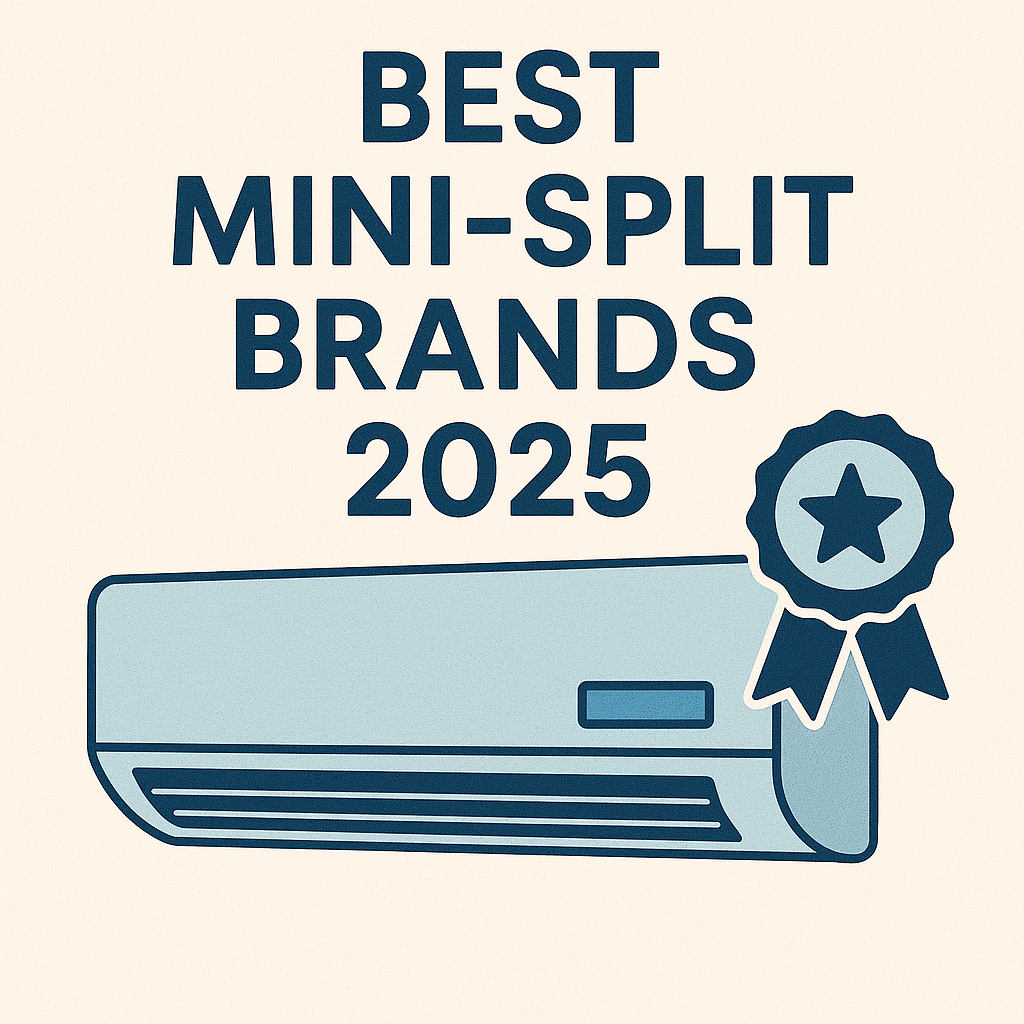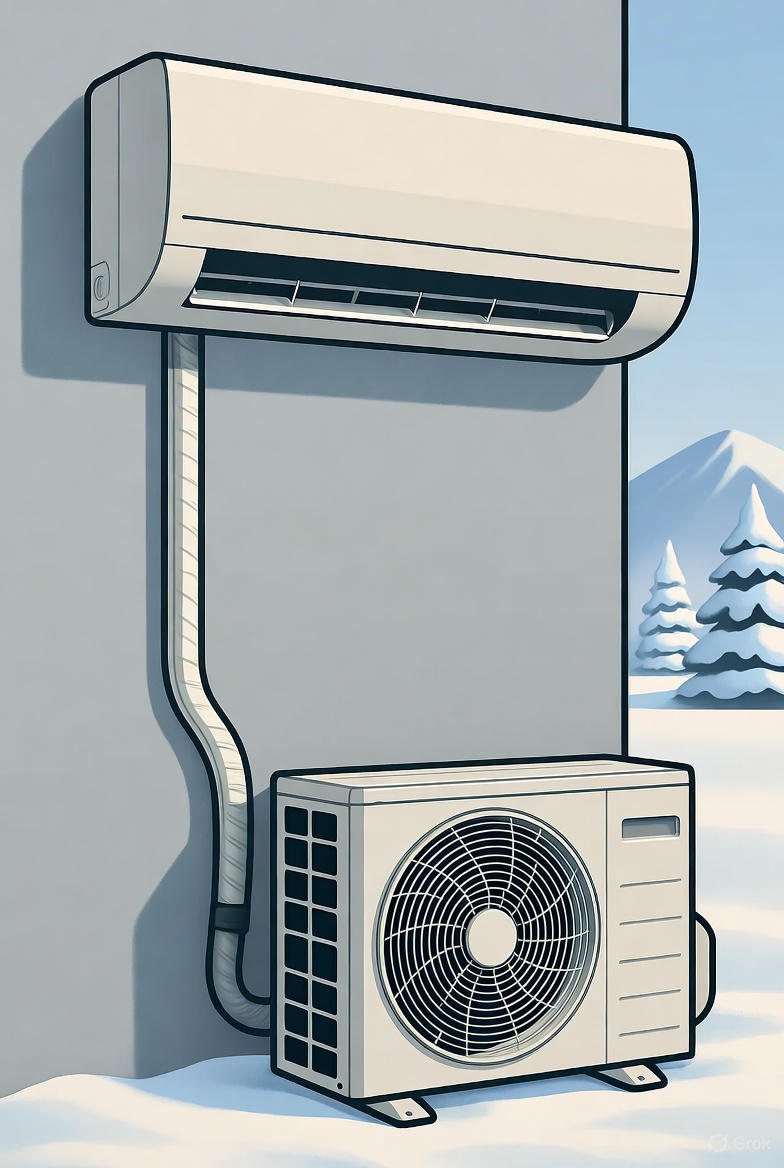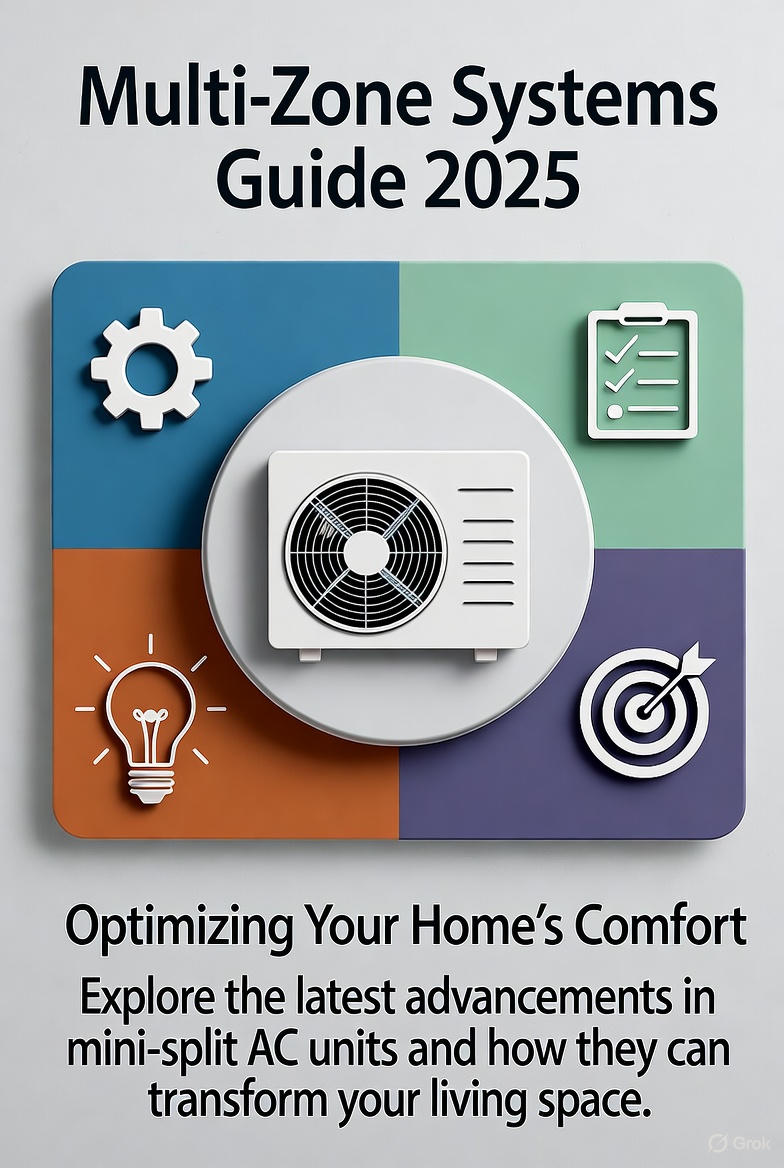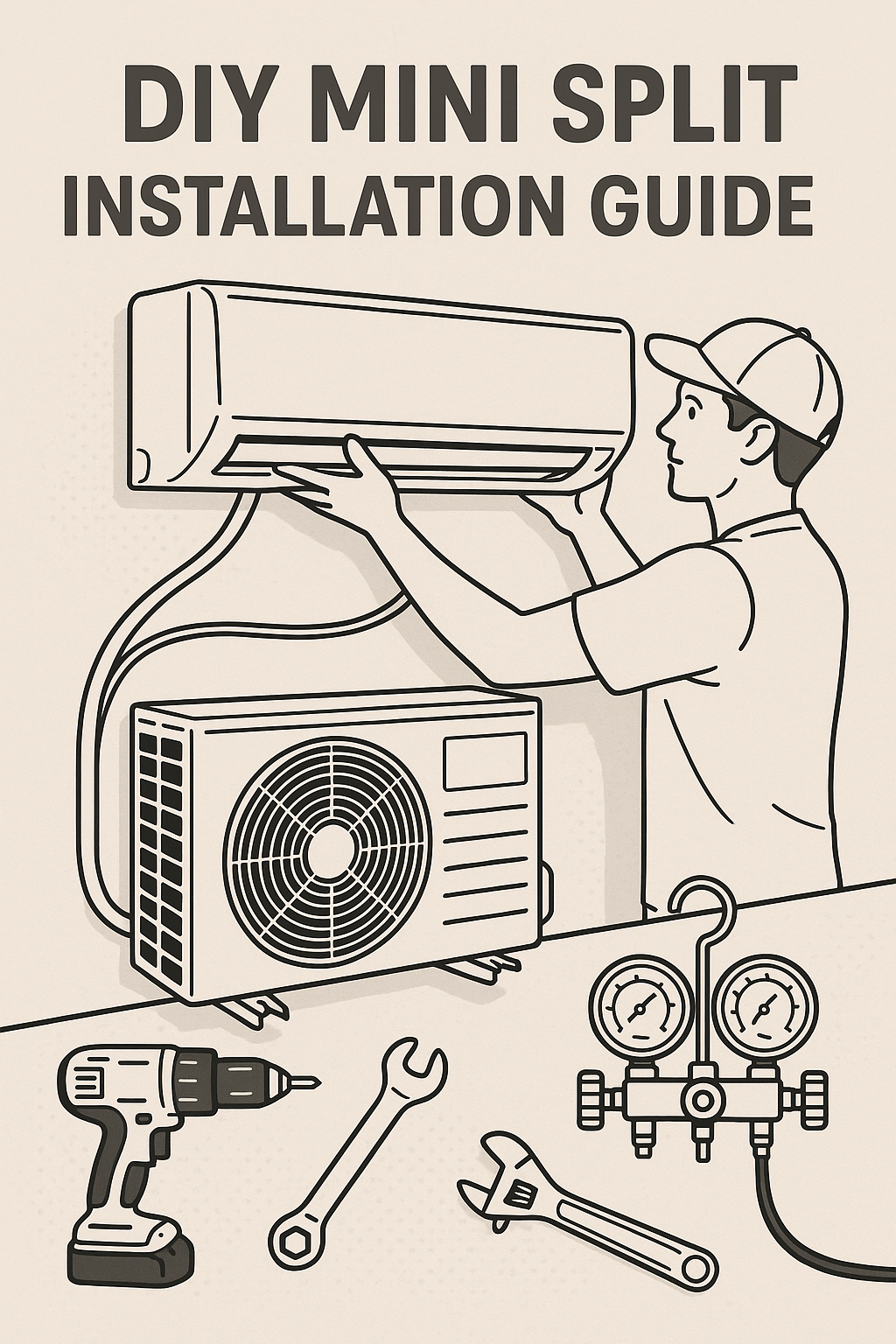When Jennifer and Tom Ramirez started researching mini-splits for their 2,200-square-foot Portland home last fall, they assumed premium Japanese brands represented the only path to quality. Their HVAC contractor quoted $12,500 for a three-zone Mitsubishi system—professional installation included but still eye-watering. Then Tom discovered DIY installation could cut that cost dramatically, opening up direct-to-consumer brands they'd never considered.
After three weeks researching efficiency ratings, cold climate performance, warranty terms, and real customer experiences, they installed a three-zone Zone Air system themselves for $5,850 total. Eighteen months later, their system delivers SEER2 24 efficiency (versus SEER2 29 for the Mitsubishi they almost bought), operates quietly in their bedrooms, and heated perfectly through Portland's coldest winter week when temps hit 18°F. Their monthly heating and cooling costs run approximately $145—roughly $15-20 more than the Mitsubishi would have cost monthly, but $6,650 less upfront.
That $6,650 savings represents 28 years of the $20 monthly efficiency difference—longer than either system's expected lifespan. The Ramirez family learned what most buyers eventually discover: premium brands deliver marginally better performance at dramatically higher prices, while mid-tier brands like Zone Air provide professional-grade quality at prices that make financial sense for most households.
This comprehensive ranking examines mini-split systems across all price tiers, from budget options through premium Japanese brands, revealing which deliver the best value for different priorities and budgets. We've analyzed performance data, warranty terms, real customer experiences, and long-term cost of ownership to cut through marketing hype and identify systems that truly deliver.
How We Ranked Mini-Split Systems
Our Evaluation Criteria:
Performance (30%):
- Cooling/heating capacity
- Cold climate performance
- Energy efficiency (SEER2/HSPF2)
- Temperature range
- Noise levels
Reliability (25%):
- Component quality
- Warranty coverage
- Brand track record
- Customer service
- Parts availability
Value (25%):
- Equipment cost
- Installation ease
- Operating costs
- Feature set
- Long-term cost of ownership
Features (20%):
- Smart home integration
- Remote access
- Filtration systems
- Design/aesthetics
- Ease of use
The Complete 2025 Rankings
#1 - Zone DIY Series (Best Overall Value)
Overall Score: 9.3/10
Why It's #1: Zone delivers premium performance at mid-tier pricing—the sweet spot most buyers are looking for. Professional-grade components with excellent cold climate capability, backed by a 10-year warranty and responsive U.S.-based support.
Specifications:
- SEER2: 24 (SEER 26)
- HSPF2: 11-12 (HSPF 12-13)
- Operating range: -13°F to 75°F heating
- Noise: 26-42 dB indoor
- Warranty: 10 years parts
- Price: $1,799-2,399 (12K BTU DIY)
Strengths:
- ✓ Exceptional price-to-performance ratio
- ✓ True cold climate capability (-13°F)
- ✓ Pre-charged line sets (easy DIY)
- ✓ Industry-leading 10-year warranty
- ✓ U.S.-based technical support
- ✓ Quick ship times (3-5 days)
- ✓ Professional-grade components
- ✓ WiFi capable
Weaknesses:
- ⚠ Brand less recognizable than Japanese brands
- ⚠ Slightly lower SEER than premium brands
- ⚠ Limited multi-zone configurations
Best For:
- DIY installers seeking professional quality
- Value-conscious buyers
- Cold climate applications
- Buyers wanting strong warranty support
Verdict: For 90% of buyers, Zone offers the best combination of performance, price, and support. You get professional-grade quality without the premium brand markup.
Price per Performance Index: 10/10
#2 - Mitsubishi M-Series Hyper-Heat (Best Premium Performance)
Overall Score: 9.1/10
Why It's #2: Mitsubishi sets the standard for premium mini-splits. Unmatched cold climate performance, whisper-quiet operation, and legendary reliability. Worth the premium price for buyers prioritizing maximum performance and longevity.
Specifications:
- SEER2: 29-33
- HSPF2: 12-14
- Operating range: -13°F to 75°F heating
- Noise: 19-42 dB indoor (quietest available)
- Warranty: 12 years compressor, 7 years parts
- Price: $2,500-4,000 (12K BTU DIY)
Strengths:
- ✓ Industry-leading cold weather performance
- ✓ Quietest operation available
- ✓ Exceptional build quality
- ✓ Extensive dealer network
- ✓ Proven 20+ year lifespan
- ✓ Excellent multi-zone systems
- ✓ Smart home integration
Weaknesses:
- ⚠ Significant price premium (40-80% more than Zone)
- ⚠ Professional installation often required
- ⚠ Longer lead times
- ⚠ Higher replacement parts costs
Best For:
- Maximum performance priority
- Extreme cold climates
- Buyers with large budgets
- Commercial applications
- Sound-sensitive installations
Verdict: If budget isn't a primary concern, Mitsubishi delivers the absolute best. For most residential applications, the performance gain doesn't justify the 50%+ price premium over Zone.
Price per Performance Index: 7/10
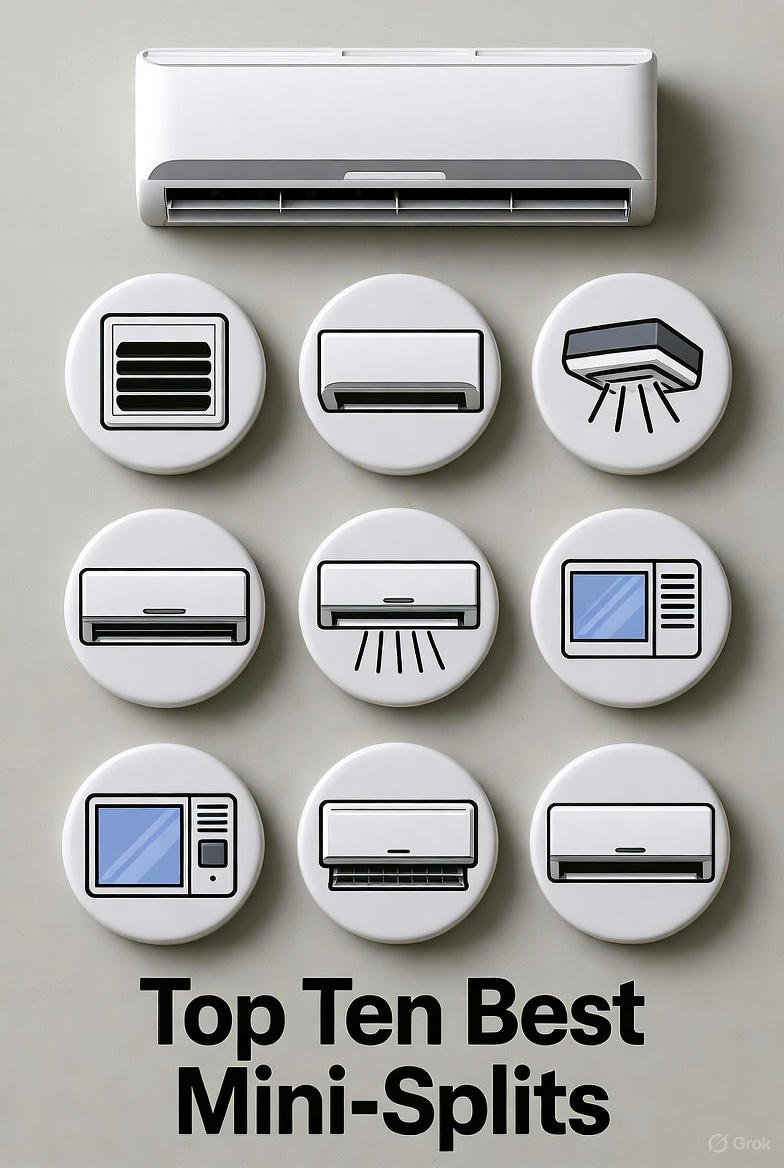
#3 - Fujitsu Halcyon XLTH (Best Efficiency)
Overall Score: 8.9/10
Why It's #3: Fujitsu achieves the highest efficiency ratings available while maintaining excellent performance. Slightly more affordable than Mitsubishi with comparable quality. Best choice for efficiency-focused buyers.
Specifications:
- SEER2: 30-33 (highest available)
- HSPF2: 12-13
- Operating range: -15°F to 75°F heating
- Noise: 22-44 dB indoor
- Warranty: 12 years compressor, 7 years parts
- Price: $2,400-3,800 (12K BTU DIY)
Strengths:
- ✓ Highest SEER2 ratings available
- ✓ Excellent cold climate performance
- ✓ Strong reliability history
- ✓ Advanced filtration options
- ✓ Good smart features
- ✓ Slightly lower price than Mitsubishi
Weaknesses:
- ⚠ Still very expensive
- ⚠ Smaller dealer network than Mitsubishi
- ⚠ Professional installation recommended
- ⚠ Limited DIY support
Best For:
- Maximum efficiency priority
- High electricity costs
- Long-term ownership
- Cold climate heating
- Eco-conscious buyers
Verdict: Best efficiency ratings available, but at premium pricing. The extra 15-20% efficiency over mid-tier brands takes 10+ years to recover through energy savings.
Price per Performance Index: 7.5/10
#4 - LG Art Cool Gallery (Best Design)
Overall Score: 8.7/10
Why It's #4: LG combines solid performance with stunning aesthetics. The Art Cool Gallery series transforms the indoor unit into a picture frame—perfect for design-conscious buyers who don't want visible HVAC equipment.
Specifications:
- SEER2: 24-27
- HSPF2: 10-11
- Operating range: 0°F to 75°F heating
- Noise: 25-44 dB indoor
- Warranty: 10 years compressor, 5 years parts
- Price: $2,200-3,400 (12K BTU DIY)
Strengths:
- ✓ Customizable front panel (display artwork)
- ✓ Sleek, modern aesthetic
- ✓ Good performance and efficiency
- ✓ ThinQ smart home integration
- ✓ Quiet operation
- ✓ Reliable LG quality
Weaknesses:
- ⚠ Premium price for aesthetic features
- ⚠ Limited cold climate capability
- ⚠ Complex installation
- ⚠ Higher replacement parts cost
Best For:
- Design-focused buyers
- Modern/contemporary homes
- Visible installations
- Mild to moderate climates
- Smart home enthusiasts
Verdict: If aesthetics matter and climate is mild, LG Art Cool delivers. You're paying a 30-40% premium for design over standard units with similar performance.
Price per Performance Index: 7/10
#5 - Daikin Aurora (Best Smart Features)
Overall Score: 8.6/10
Why It's #5: Daikin pioneered inverter technology and continues leading in smart features. Advanced air purification, superior app control, and excellent performance. Best choice for tech-focused buyers.
Specifications:
- SEER2: 30-34 (class-leading)
- HSPF2: 13-14
- Operating range: -4°F to 75°F heating
- Noise: 22-46 dB indoor
- Warranty: 12 years parts
- Price: $2,800-4,200 (12K BTU DIY)
Strengths:
- ✓ Most advanced smart controls
- ✓ Superior air filtration
- ✓ Excellent efficiency
- ✓ Strong dehumidification
- ✓ Inverter technology pioneer
- ✓ Comprehensive app features
Weaknesses:
- ⚠ Highest price point
- ⚠ Limited cold climate capability
- ⚠ Complex installation
- ⚠ Smaller U.S. dealer network
- ⚠ Expensive replacement parts
Best For:
- Smart home integration
- Air quality concerns
- Mild to moderate climates
- High-end installations
- Tech enthusiasts
Verdict: Cutting-edge technology and features, but at the highest price point. The advanced features don't translate to meaningfully better comfort for most users.
Price per Performance Index: 6.5/10
#6 - Gree Sapphire (Best Budget Cold Climate)
Overall Score: 8.4/10
Why It's #6: Gree delivers solid cold climate performance at budget pricing. Not quite the quality of premium brands, but excellent value for buyers in cold climates on a budget.
Specifications:
- SEER2: 23-26
- HSPF2: 10-11
- Operating range: -22°F to 75°F heating (rated)
- Noise: 28-48 dB indoor
- Warranty: 7 years parts
- Price: $1,600-2,200 (12K BTU DIY)
Strengths:
- ✓ Excellent cold climate capability
- ✓ Competitive pricing
- ✓ Good efficiency ratings
- ✓ Decent warranty
- ✓ Multiple capacity options
- ✓ Pre-charged line sets
Weaknesses:
- ⚠ Lower build quality than premium brands
- ⚠ Noisier operation
- ⚠ Limited smart features
- ⚠ Basic remote control
- ⚠ Mixed customer service reviews
Best For:
- Budget-conscious cold climate buyers
- Rental properties
- Supplemental heating
- Less critical applications
- DIY installers
Verdict: Best budget option for cold climates. Expect 10-15 year lifespan vs 20+ for premium brands, but at 30-40% lower upfront cost.
Price per Performance Index: 8.5/10
#7 - Senville LETO (Best Budget Overall)
Overall Score: 8.2/10
Why It's #7: Senville offers the lowest entry price with acceptable performance for mild climates. Perfect for budget-conscious buyers in warm regions needing cooling-focused systems.
Specifications:
- SEER2: 19-22
- HSPF2: 9-10
- Operating range: 15°F to 75°F heating
- Noise: 30-50 dB indoor
- Warranty: 5 years parts
- Price: $900-1,400 (12K BTU DIY)
Strengths:
- ✓ Lowest upfront cost
- ✓ Easy DIY installation
- ✓ Pre-charged line sets
- ✓ Acceptable cooling performance
- ✓ Quick ship times
- ✓ Multiple sizes available
Weaknesses:
- ⚠ Limited heating capability
- ⚠ Lower efficiency
- ⚠ Basic features only
- ⚠ Shorter warranty
- ⚠ Noisier operation
- ⚠ Lower build quality
Best For:
- Tight budgets
- Mild climates (southern U.S.)
- Cooling-only applications
- Garage/workshop cooling
- Temporary solutions
Verdict: Gets the job done for basic cooling needs. Don't expect longevity or cold climate performance, but excellent value for simple applications.
Price per Performance Index: 9/10
#8 - Cooper & Hunter Sophia (Best Mid-Range DIY)
Overall Score: 8.0/10
Why It's #8: Cooper & Hunter offers good performance and features at accessible pricing. Popular with DIYers for straightforward installation and decent quality.
Specifications:
- SEER2: 21-23
- HSPF2: 9.5-10.5
- Operating range: 5°F to 75°F heating
- Noise: 27-47 dB indoor
- Warranty: 7 years parts
- Price: $1,300-1,900 (12K BTU DIY)
Strengths:
- ✓ Good DIY support
- ✓ Pre-charged line sets
- ✓ Decent efficiency
- ✓ Reasonable pricing
- ✓ WiFi capable
- ✓ Multiple configurations
Weaknesses:
- ⚠ Limited cold climate capability
- ⚠ Average performance
- ⚠ Limited dealer network
- ⚠ Moderate noise levels
- ⚠ Basic features
Best For:
- DIY installers
- Moderate climates
- Budget to mid-range buyers
- Supplemental HVAC
- First-time mini-split buyers
Verdict: Solid middle-of-the-pack option. Nothing exceptional, but nothing terrible. Gets the job done without breaking the bank.
Price per Performance Index: 8/10
#9 - Pioneer WYS Series (Budget Workhorse)
Overall Score: 7.7/10
Why It's #9: Pioneer offers basic performance at budget prices. Long-standing brand with decent reputation for reliability in its price class. Best for non-critical applications.
Specifications:
- SEER2: 19-21
- HSPF2: 9-10
- Operating range: 5°F to 75°F heating
- Noise: 32-52 dB indoor
- Warranty: 5 years parts
- Price: $1,200-1,600 (12K BTU DIY)
Strengths:
- ✓ Established budget brand
- ✓ Wide availability
- ✓ Pre-charged line sets
- ✓ Simple installation
- ✓ Low upfront cost
Weaknesses:
- ⚠ Below-average efficiency
- ⚠ No cold climate capability
- ⚠ Louder operation
- ⚠ Basic features only
- ⚠ Shorter lifespan expected
Best For:
- Minimal budgets
- Warm climates only
- Garage/workshop
- Rental properties
- Temporary installations
Verdict: Functional but uninspiring. Works fine for basic cooling in warm climates, but don't expect premium performance or longevity.
Price per Performance Index: 7.5/10
#10 - MRCOOL DIY (Best for True DIY Beginners)
Overall Score: 7.5/10
Why It's #10: MRCOOL pioneered the DIY mini-split market with their quick-connect line sets requiring no vacuum pump. Perfect for absolute beginners, but performance lags competitors.
Specifications:
- SEER2: 17-19
- HSPF2: 8.5-9.5
- Operating range: 5°F to 75°F heating
- Noise: 35-55 dB indoor
- Warranty: 5 years parts
- Price: $1,400-2,000 (12K BTU)
Strengths:
- ✓ No vacuum pump needed (quick-connect)
- ✓ Easiest installation available
- ✓ Good DIY support/videos
- ✓ Pre-charged line sets
- ✓ Multiple size options
Weaknesses:
- ⚠ Lowest efficiency in rankings
- ⚠ No cold climate capability
- ⚠ Noisiest operation
- ⚠ Premium price for budget performance
- ⚠ Proprietary line sets
Best For:
- First-time DIY installers
- Those without HVAC tools
- Simple installations
- Warm climates
- Learning/practice installations
Verdict: Pays for convenience with lower performance and higher price than similar-performance competitors requiring vacuum pumps. Worth it only if you absolutely won't rent/buy a vacuum pump.
Price per Performance Index: 6/10
Comparison Chart: All 10 Systems
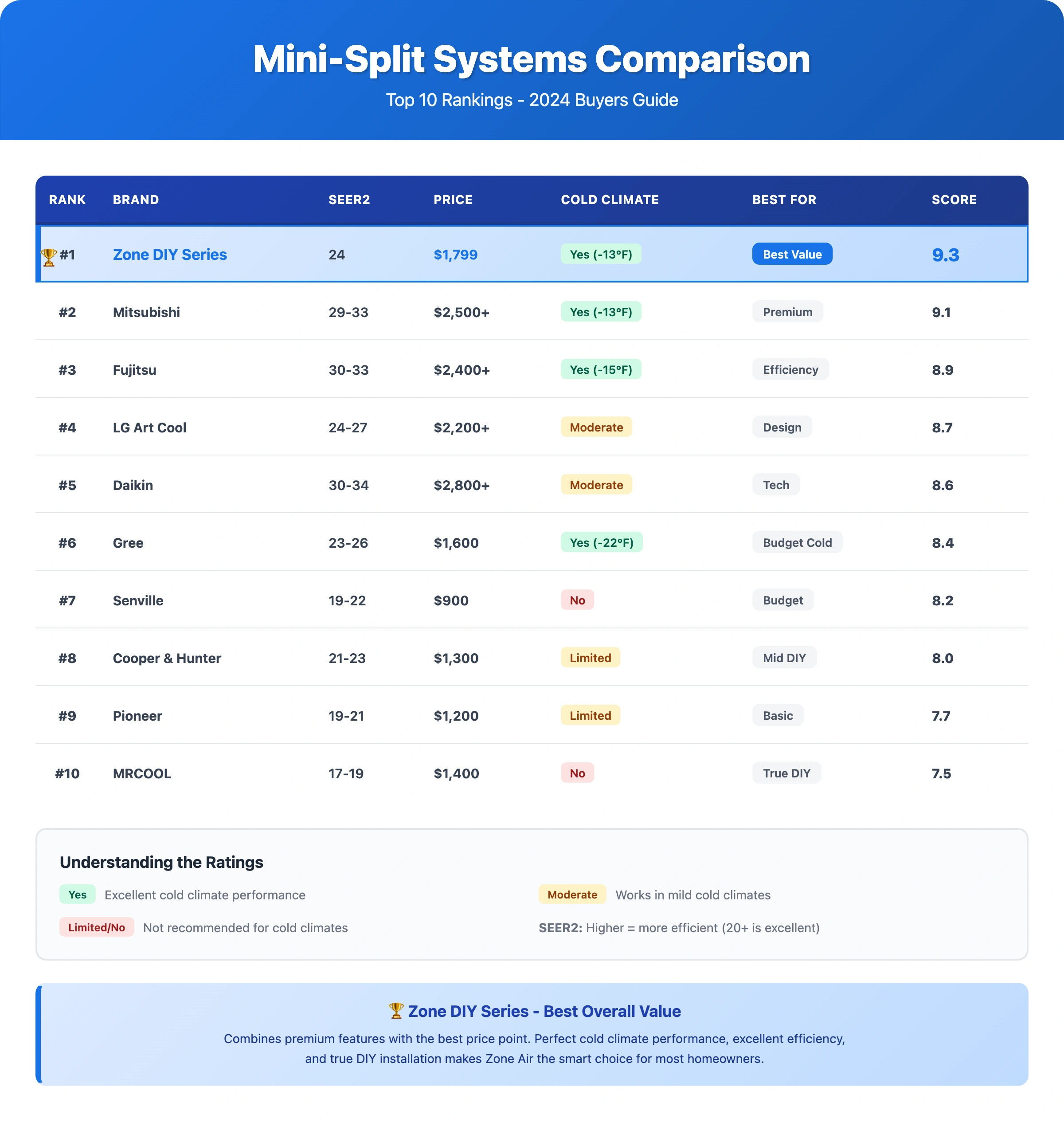
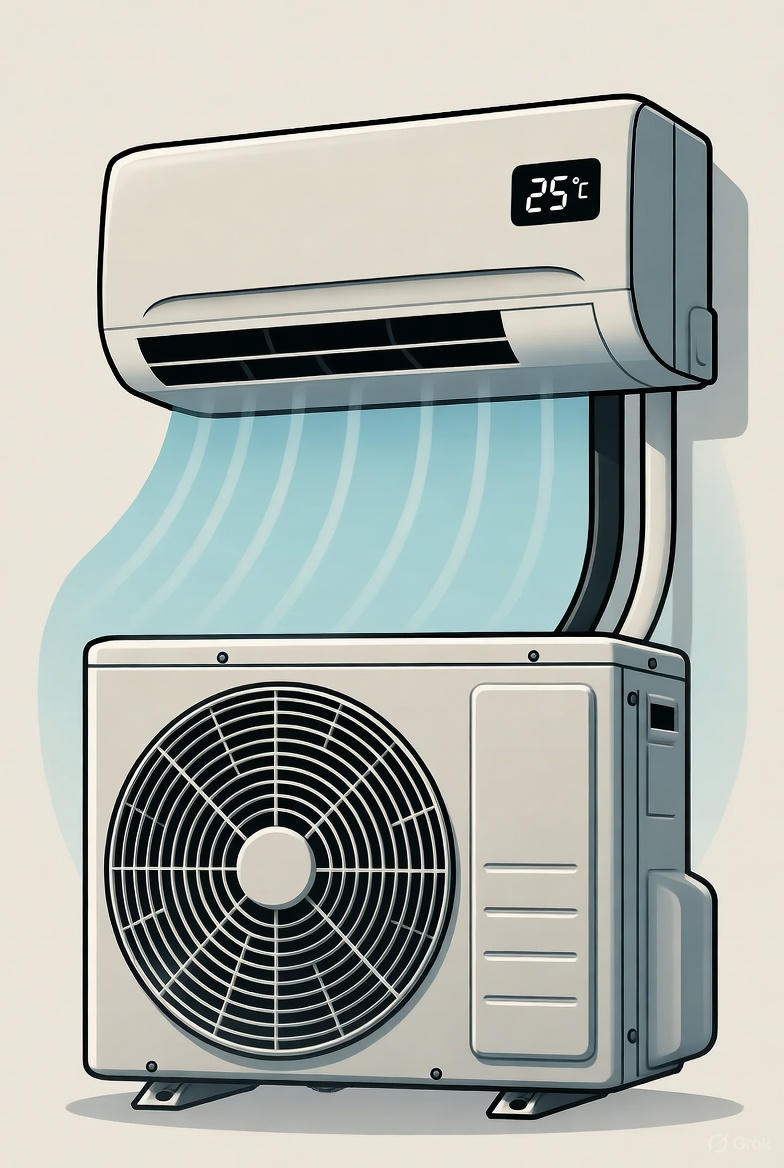
Which Mini-Split Should YOU Buy?
By Budget
Under $1,000: Senville LETO - Only viable option at this price point. Cooling only, warm climates.
$1,000-1,500: Pioneer WYS or Cooper & Hunter - Basic performance, DIY friendly.
$1,500-2,000: Zone DIY Series (HIGHLY RECOMMENDED) - Best value. Professional performance, cold climate capable, excellent warranty.
$2,000-3,000: Zone DIY Series or Gree (cold climate) | LG Art Cool (design focus)
$3,000+: Mitsubishi (max performance) | Fujitsu (max efficiency) | Daikin (tech features)
By Climate
Cold Climate (Winters below 20°F regularly):
- Zone DIY Series - Best value for cold climate
- Mitsubishi - Maximum performance
- Fujitsu - Excellent efficiency
- Gree - Budget cold climate
Moderate Climate: Any system works. Choose by budget and features.
Hot Climate (Minimal heating needed): Cooling performance matters most:
- Zone DIY Series - Strong cooling
- Senville - Budget cooling
- Pioneer - Basic cooling
By Priority
Best Overall Value: Zone DIY Series - 90% of buyers should choose this.
Maximum Performance: Mitsubishi M-Series - Worth the premium if performance is priority #1.
Highest Efficiency: Fujitsu XLTH - Best SEER2 ratings available.
Best Design: LG Art Cool - For design-conscious buyers.
Tightest Budget: Senville LETO - Gets job done cheaply.
Easiest DIY: MRCOOL - No vacuum pump needed (but performance suffers).
Common Buying Mistakes to Avoid
❌ Buying based on brand name alone Premium Japanese brands are excellent, but you pay 50-100% more for marginal performance gains.
❌ Ignoring cold climate capability Standard heat pumps fail below 20°F. If you have real winters, pay for cold climate models.
❌ Choosing MRCOOL just to avoid vacuum pump Renting a vacuum pump costs $40-80. Don't sacrifice 20-30% efficiency to save $50.
❌ Undersizing for heating Size based on heating capacity at your design temperature, not rated capacity.
❌ Focusing only on SEER SEER2 28 vs 24 won't noticeably impact comfort or bills for most users. Diminishing returns above SEER2 24.
❌ Buying bottom-tier for primary HVAC Budget brands work fine for supplemental cooling but lack the longevity/performance for primary home heating/cooling.
Installation Cost Considerations
DIY Installation:
- Zone, Gree, Senville, Pioneer: $0 labor (easiest)
- Mitsubishi, Fujitsu, Daikin: Possible but complex
- MRCOOL: Easiest DIY (no vacuum pump)
Professional Installation:
- Labor: $800-1,500 per zone
- Electrical: $200-600
- Total installed cost:
- Zone: $2,600-3,900
- Mitsubishi: $3,300-5,500
- Budget brands: $1,700-2,900
DIY savings: $1,000-1,500 per installation
Final Recommendations
For 90% of Buyers:
Choose Zone DIY Series
- Best price-to-performance ratio
- True cold climate capability
- 10-year warranty
- Excellent DIY support
- Professional-grade quality
- Save $800-1,500 vs Mitsubishi
For Premium Buyers (Top 10%):
Choose Mitsubishi M-Series
- Ultimate performance and reliability
- Quietest operation available
- Proven 20+ year lifespan
- Extensive dealer support
For Tight Budgets:
Choose Senville LETO (warm climate) or Gree (cold climate)
- Lowest viable cost
- Acceptable performance
- DIY friendly
- Expect 10-year lifespan
For Design-Conscious Buyers:
Choose LG Art Cool
- Beautiful aesthetic integration
- Good performance
- Smart features
Frequently Asked Questions
Which mini-split brand is most reliable in 2025?
Mitsubishi consistently ranks as the most reliable mini-split brand based on failure rates, warranty claims, and technician surveys, with many systems operating trouble-free for 20+ years. However, "most reliable" doesn't automatically mean "best value." Mitsubishi's premium pricing ($2,500-4,000 for 12K BTU) delivers reliability that exceeds what most residential applications require. Zone Air systems achieve professional-grade reliability with GMCC/Highly compressors (Midea subsidiary—one of the world's largest HVAC manufacturers), expected 15-20 year lifespan, and industry-leading 10-year warranty coverage at $1,799-2,399—roughly half Mitsubishi's cost. For primary home heating and cooling, Zone's reliability proves more than adequate while delivering dramatically better value. Budget brands like Pioneer or Senville offer acceptable 8-12 year reliability for supplemental applications at lower prices. The reliability difference between premium and mid-tier brands matters less than the reliability difference between mid-tier and budget—Zone occupies the sweet spot.
Is Mitsubishi worth the extra cost over brands like Zone Air?
Mitsubishi's premium positioning stems from marginally better efficiency (SEER2 29-33 vs Zone DIY Series 24), quieter operation (19-42 dB vs 26-42 dB), and proven 20+ year lifespan versus Zone DIY Series 15-20 years. For most buyers, these advantages don't justify the $700-1,600 price premium per zone. A three-zone Mitsubishi system costs approximately $7,500-12,000 (DIY) versus $5,400-7,200 for Zone—a $2,100-4,800 difference. The efficiency advantage saves roughly $15-25 monthly, requiring 7-16 years to recover the upfront premium. Mitsubishi makes sense for sound-sensitive installations (recording studios, bedrooms adjacent to living spaces), extreme cold climates where maximum heating capacity matters, or buyers prioritizing absolute maximum performance regardless of cost. For typical residential applications in moderate climates, Zone delivers 95% of Mitsubishi's performance at 50-65% of the cost—compelling value that explains why 90% of buyers choose mid-tier over premium brands.
What's the best mini-split brand for cold climates?
Zone Air's cold climate systems operate down to -13°F while maintaining strong heating capacity—10,200 BTU at 5°F and 7,500 BTU even at -13°F for a 12K BTU rated system. This matches Mitsubishi's Hyper-Heat cold climate performance at roughly half the cost. Fujitsu operates slightly colder (-15°F minimum) with comparable capacity retention. Standard heat pump models from budget brands typically shut down at 5-20°F, making them unsuitable for northern climates. Cold climate capability requires specific compressor technology, enhanced vapor injection, and optimized refrigerant circuits—features that distinguish true cold climate systems from standard heat pumps marketed misleadingly as "heating and cooling." For Minneapolis, Burlington, Bozeman, or similar climates with regular sub-zero temperatures, choose genuine cold climate models. Zone delivers this capability at $1,899-2,399, Mitsubishi at $2,500-4,000, and Fujitsu at $2,400-3,800. Budget brands offering "cold climate" models rarely perform adequately below 10°F despite marketing claims.
Can I install a mini-split myself or do I need a professional?
DIY installation proves completely feasible for mechanically-inclined homeowners willing to invest 5-8 hours and rent a vacuum pump ($40-80). The process involves mounting indoor and outdoor units, running refrigerant line sets through walls, making electrical connections, pulling vacuum to remove moisture, and releasing pre-charged refrigerant. Zone Air provides comprehensive DIY support including detailed videos, U.S.-based technical support available during installation, and clear manuals written for first-timers. Approximately 60% of Zone customers install themselves successfully, saving $800-1,500 per zone in professional installation costs. The vacuum pump operation intimidates many but actually represents the easiest step—connect hoses, turn on pump, wait 45 minutes while it runs unattended, verify gauge holds vacuum. Premium brands like Mitsubishi typically require professional installation to maintain warranty, adding $800-2,000+ per zone. Budget brands offer DIY-friendly kits but provide minimal installation support, leaving you stuck when problems arise. Your decision should consider: mechanical aptitude, available time, access to rental vacuum pump, comfort with electrical connections, and whether $1,000+ savings justifies the effort.
Which mini-split has the highest SEER rating in 2025?
Fujitsu Halcyon XLTH systems achieve the highest SEER2 ratings currently available at 30-33, followed closely by premium Mitsubishi models at 29-33 SEER2. These efficiency leaders deliver diminishing returns—the 25-35% efficiency advantage over mid-tier systems like Zone Air (SEER2 24) saves approximately $60-90 annually for typical usage, requiring 15-20+ years to recover the $1,000-2,000 price premium through energy savings alone. High SEER ratings matter most in hot climates with expensive electricity—think Arizona, Florida, Hawaii, or California where systems run 1,500+ annual cooling hours and electricity exceeds $0.15/kWh. In these scenarios, ultra-high efficiency potentially recovers its premium within 8-12 years through substantial energy savings. For moderate climates or areas with low electricity rates, Zone's SEER2 24 provides excellent efficiency at much better value. Consider that SEER2 24 already represents 40% better efficiency than the 2015 federal minimum and 20% better than current minimum standards. Chasing maximum SEER ratings makes financial sense only for specific high-usage, high-cost scenarios—most buyers benefit more from Zone's balance of strong efficiency and reasonable pricing.
What size mini-split do I need for my space?
Proper sizing requires calculating your actual heat load based on square footage, insulation quality, window area, climate zone, and sun exposure—our load calculator handles this automatically. As rough estimates: 9K BTU handles 300-400 sq ft, 12K BTU covers 400-550 sq ft, 18K BTU serves 600-850 sq ft, and 24K BTU manages 900-1,200 sq ft. These ranges assume average insulation, moderate climate, and typical window area. Under-sizing forces the system to run constantly, struggling to maintain temperature and wearing components prematurely. Over-sizing causes short cycling—the system reaches setpoint quickly, shuts down, then quickly needs to restart, reducing efficiency and comfort while increasing wear. Size based on heating requirements in cold climates (heating loads typically exceed cooling needs), and cooling requirements in warm climates. Multi-zone systems require careful balancing—total outdoor capacity must meet or slightly exceed total indoor capacity, but shouldn't massively exceed it. Professional sizing delivers best results, but Zone's technical support (801-882-2324) provides free sizing assistance for DIYers using our calculator results. Proper sizing matters more than brand selection—a correctly-sized mid-tier system outperforms an incorrectly-sized premium system every time.
Conclusion
The mini-split market offers excellent options at every price point in 2025. Zone DIY Series delivers the best overall value, combining professional-grade performance with mid-tier pricing and industry-leading support.
Premium Japanese brands (Mitsubishi, Fujitsu, Daikin) are excellent but command 50-100% price premiums for marginal performance gains that most buyers won't perceive.
Budget brands work fine for supplemental or non-critical applications, but invest in quality for primary home HVAC.
Ready to buy?
- Use our load calculator to size your system
- View Zone's current models
- Call (801) 882-2324 for expert sizing help
- Check available rebates and tax credits
Related Guides:
About the Author: Thomas Johnson is a Sales & Customer Success Specialist at Zone Air with a background in business and competitive strategy. Drawing from his experience in rugby, where teamwork and strategic planning are essential, Thomas applies the same principles to helping customers find the perfect HVAC solution for their needs. He specializes in product comparisons, brand analysis, and matching customers with systems that deliver the best value for their specific situation. Thomas's consultative approach ensures customers understand their options clearly and make confident purchasing decisions. When not helping homeowners upgrade their comfort, you'll find him on the rugby pitch developing the same strategic thinking he brings to customer consultations.


